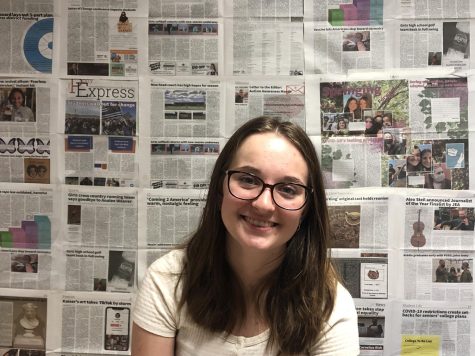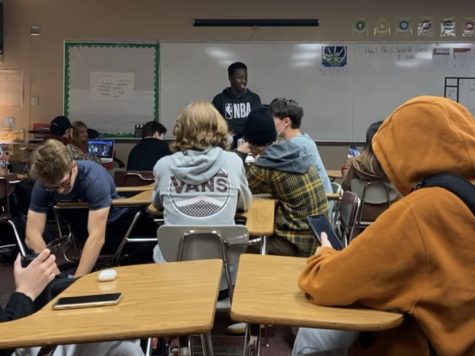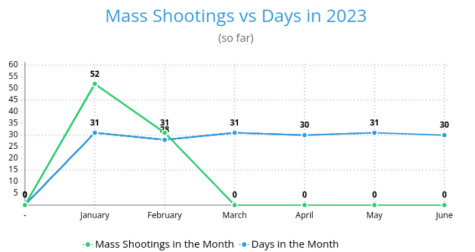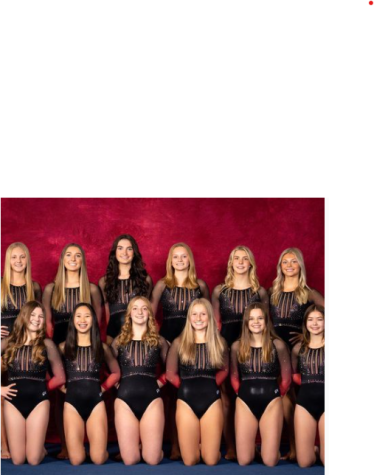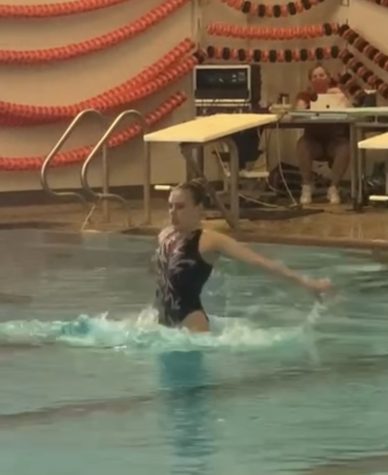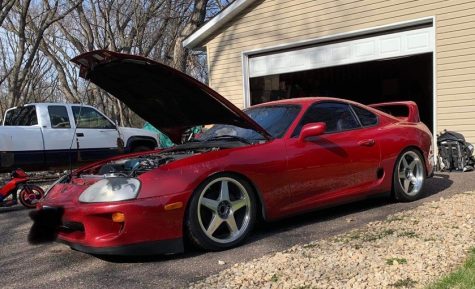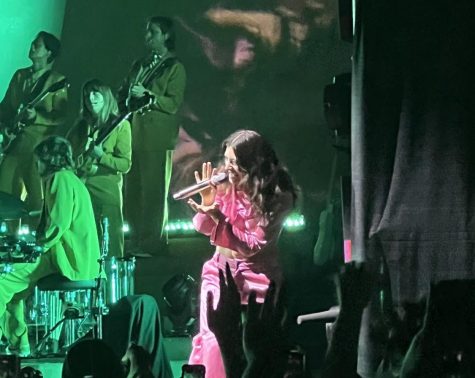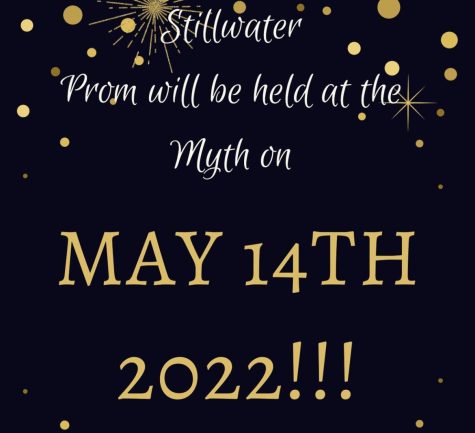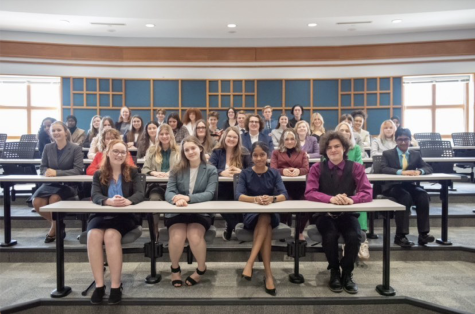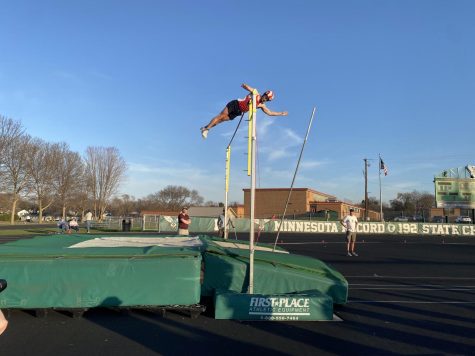Students reflect on what they took for granted in previous school years
October 15, 2020
Students have been given a choice of whether they would like to learn online or attend hybrid learning for the 2020-2021 school year. Neither option is anything like previous years, and looking back, students have realized they have taken their previous education for granted. Whether they may have taken their relationship with teachers, relationships with classmates, or the normalcy of previous years for granted, most students have noticed they took at least something from previous years for granted. This school year has been different from past years for both in-person and hybrid students. All students are required to wear a mask, social distance in class, and follow one-ways in school. C-day students have had to adapt to learning 100% online learning and little to no interactions with classmates.
The 2020-2021 school year is nothing like it has been in the past, and students have realized they took certain aspects of school for granted, one of these aspects being the social aspect previous school years had. In past years, students have been able to collaborate with others on projects and socialize in class. Now that social distancing has been implemented in school, these interactions between students have been limited.
“I miss getting to see my friends and hanging out with them. Lunch and passing time used to be times where I could catch up with them in middle school so I just feel like we have not had as much time together this year,” freshman Jillian Kulzer said.
Sophomore Katelyn Stack misses the large class sizes, having many people in her classes to talk to, this year, she has not been able to have these interactions, due to limited class sizes and social distancing.
In previous years, it has been fairly simple for a student to receive teacher help; most students could either ask teachers questions in class or via email. This school year, students learn in person only two days of the week, which has made receiving help from teachers a bit more difficult due to the high demand of teachers over email. Response time may not be as fast as students need.
Kulzer said this year does not feel the same as regular school. She feels like she has not been understanding the subjects as much as she would regularly, although she still feels supported by her teachers, who have been trying their best to make school as normal and helpful as possible.
Students have been looking on the bright side, however, realizing there are some new aspects of school they have been enjoying. Along with COVID-19 procedures, the school day has also been shortened. School is now held from 7:40 a.m. -12:20 p.m. this year in contrast to past years from 7:40 a.m.-2:10 p.m.. Through a federal grant, students enjoy free lunches, and the school has also implemented a quarter-long schedule, where each student attends three classes a quarter. In previous years, the school held six classes per semester.
Kulzer has taken this school year to her advantage. “I enjoy being able to sleep in occasionally because we do not go to school every day, the free meals this year have been pretty nice so that way I do not have to go home and make myself food, and the quarter schedule has been nice because that way I can focus on fewer classes at one time, which has made it easier to adapt to hybrid learning.”
First-quarter comes to a close on Nov. 10, which has students and teachers pondering the same question: “Did we fit a full semester of learning in nine weeks?” Some students feel ready to switch although others may not. Although students have learned a majority of the material they would normally learn, some students may not feel as if it is time for their classes to end. Students in advanced placement (AP) classes this quarter may have felt more rushed, but for students in standard classes, nine weeks may have felt like the perfect amount of time.
“I am ready to switch because I feel like I have done a lot of these classes already, but it does feel weird, going into new classes already. Learning this quarter did not feel the same this year, it just felt kind of rushed and cramped, especially in my AP classes where the time to take notes was shortened as well,” Stack said.
This year, teachers have been delivering their class lessons and instructions via Schoology, a virtual learning website used by K-12 students. Schoology has many different options for teachers to deliver their material, even online tests and quizzes. The Stillwater school district began using Schoology as the main form of online lesson delivery on Aug. 28, 2019, and it has played a vital role in Stillwater’s hybrid and distance learning.
Science teacher Ben Straka has been using Schoology since 2009, so using Schoology this year has not been an added challenge for him. Despite the unknowns of this school year, he found some stability through Schoology, which helps him deliver his daily lessons with ease. “I am the longest-tenured teacher in the district to use Schoology. I was using Schoology back when we were using Moodle in the district. I found it as a better source of learning, and a platform that allowed me to do different things such as discussions and post different videos and have students collaborate within a digital space,” Straka said.
Math teacher Kara Odegaard teaches 100% online this year and has been discovering the options Schoology has to offer. Although she has not mastered all of Schoology yet, she feels she has been making progress in adapting. Odegaard also found new online sites to teach through as well. She has found ways to practice math on the computer, create interactive lessons over Zoom, and rethink how to assess some concepts so they work in the digital platform.
In past years, teachers had the opportunity to deliver their lessons through hands-on learning involving labs, field trips, or other hands-on learning opportunities. These activities, however, have temporarily been put on pause for COVID-19. Teachers have had to improvise this year by eliminating hands-on experiences or delivering these lessons virtually through recording videos of themselves doing a lab or finding an online substitute.
Straka teaches astronomy and biology classes, both of which had hands-on activities in the past. “Astronomy is a class that has a lot of in-depth labs, we would normally do Star lab, which is something that a lot of kids remember from elementary school and why they love going to astronomy because we go in there and we talk about the stories of Greek mythology, because of COVID-19 restrictions we have not been able to do any of that. All my labs had to become virtual so it was me filming the set up along with the data so students are expected to be able to extrapolate the data from what I showed them on a video slide.”
Straka has not had to change what he teaches, but he has had to change how he teaches. Students still learned how to look at the constellations, his class just did not do it together. For biology, he changed up how he taught the class, and some of the labs are now all virtual versus in-person labs.
Many students and teachers did not imagine school would take a hybrid format, that is before COVID-19. Although hybrid may not be many teachers and students first choice for learning, students and teachers still enjoy seeing people in school. It has been a challenge adapting for both teachers and students, as teachers have been creating recorded video lessons for students who are not in class and having an in-depth discussion with those who are, and students adapting to how they attend class and interact with teachers. In the end, students and teachers are both rewarded with being able to see others in person and the opportunity to interact and build relationships with them as well.


